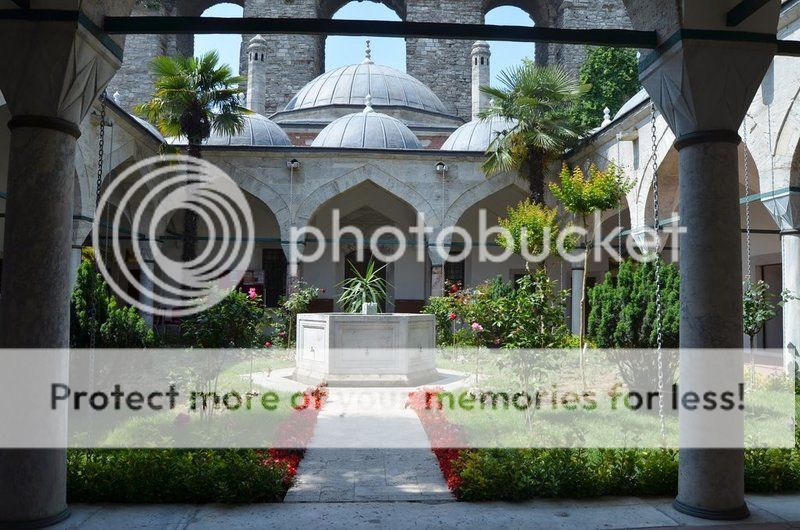GPS : 41°00'58.7"N 28°57'19.6"E / 41.016306, 28.955444

PHOTOGRAPHS ALBUM
Established by Gazanfer Ağa in 1599, it includes a small medrese, the türbe of the founder, and a charming sebil with handsome grilled windows. Gazanfer Ağa was the younger brother of Cafer Ağa, whose medrese we saw next to Haghia Sophia. He was Chief of the White Eunuchs in the reign of Sultan Mehmet III. Gazanfer was the last of the White Eunuchs to control affairs in the Saray, for after his time the Chief Black Eunuch became the dominant figure.
The Gazanfer Ağa complex, which consists of an Ottoman medrese, a shrine and a fountain in Saraçhanebaşı, was restored as the new structure and re-opened in 1989. Gazanfer Ağa Complex, which was probably built by the Architect Davut Ağa between 1590 and 1591, is one of the rare examples without a mosque in the center. It was restored many times after the fire of 1782 for various reasons.
Gazanfer Ağa built a small medrese and his own turbe near the Aqueduct of Valens and at a short distance from a small hammam designed by Mimar Sinan. Built in 1599, the Gazanfer Ağa Complex contained a medrese (religious school), sabil (water fountain) and a turbe (cemetary). The contrast in the typically Ottoman architecture, with its multiple domes and small turrets, is amplified by the shadowing Roman aqueduct next door.
It is the first place in Ottoman architecture where the patron’s tomb was built next to his work. The dodecagonal plan tomb was built with cut küfeki stone and it contains three sarcophagi. The madrasah with 17 rooms, which fulfilled its main function until 1914, was subsequently closed.
After the restoration between 1943 and 1944, the madrasah hosted the Belediye Museum until 1989. It was converted into the Cartoon and Humour Museum after the Belediye Museum.
Two triangular office towers rising over the ground floor pedestal and oriented to the roof garden on top of the ground floor. While their north and south façades are blank against the extreme weather conditions, other diagonal façades look to richly landscaped roof gardens.
Gazanfer Ağa and his brother Cafer Ağa were taken prisoner during the campaign of Hungary, and later entered the service of Şehzade Selim by converting into Islam. Şehzade Selim, before he ascended to the throne in 1566, invited Gazanfer Ağa and his brother Cafer Ağa to the palace to join his household, which they could do only as eunuch. Cafer died during surgery, but Gazanfer worked in senior positions for 30 year, before being executed by fatwa in the rebellion in 1603.
Gazanfer Ağa was the Head of the White Eunuchs had been captured when he was a boy; he became a servant of the future Sultan Selim II who convinced him to become an eunuch. With the favour of Nurbanu and Safiye Sultan he became one of the most influential persons in the government.
He served three sultans, but in 1603 Sultan Mehmet III had to face an almost open rebellion of the highest ranks of the army; they accused Gazanfer of ill advising the Sultan Mehmet III eventually was forced to sacrifice Gazanfer, who was murdered before his very eyes. Gazanfer was the last of the White Eunuchs to be the chief of the Harem; Sultan Mehmet III gave this role to a Black Eunuch.
Gazanfer Ağa was executed in 1603, having involved himself too deeply in the affairs of the Harem. The külliye was restored in 1945 and originally housed the Municipal Museum; it now serves as the Museum of Cartoons and Humour. Like most city museums, it has a rather provincial and neglected look, though some of the exhibits are not without interest. The cells of the medrese have had doors cut between them to form the galleries of the museum.
LOCATION SATELLITE MAP
These scripts and photographs are registered under © Copyright 2016, respected writers and photographers from the internet. All Rights Reserved.
No comments:
Post a Comment